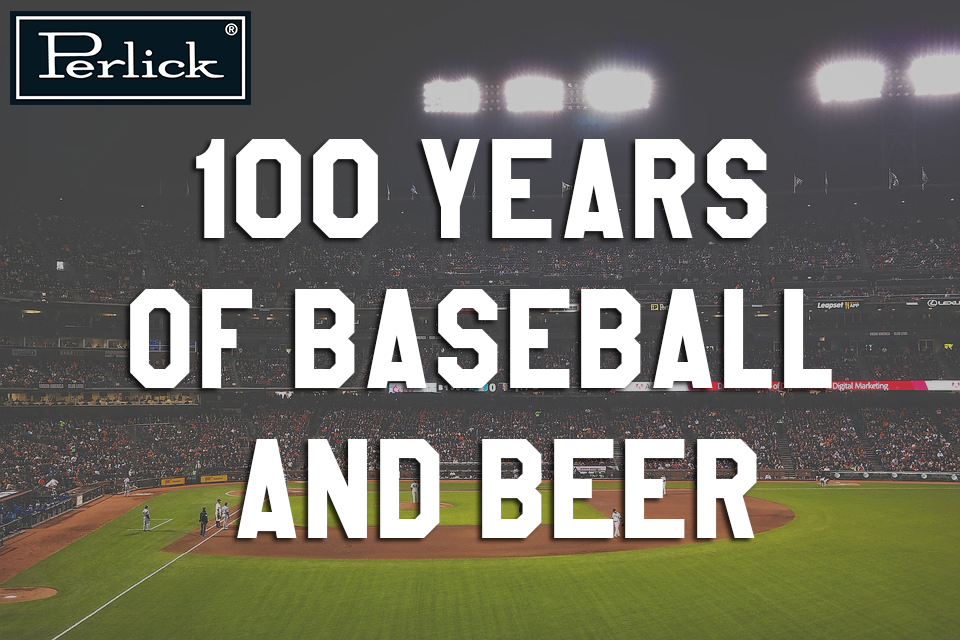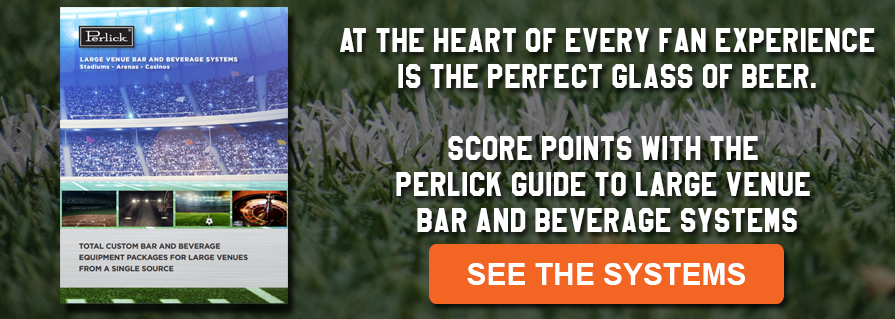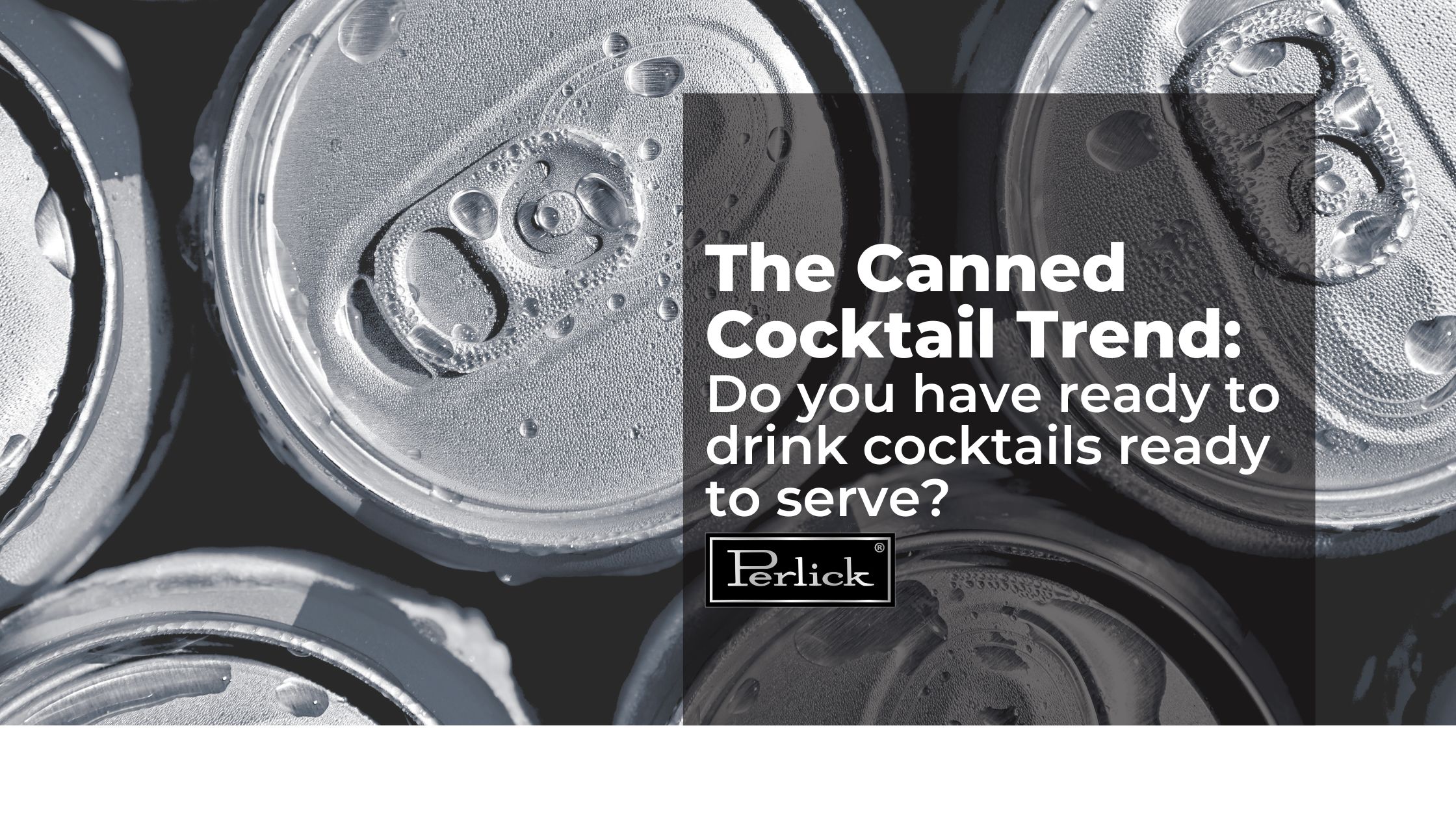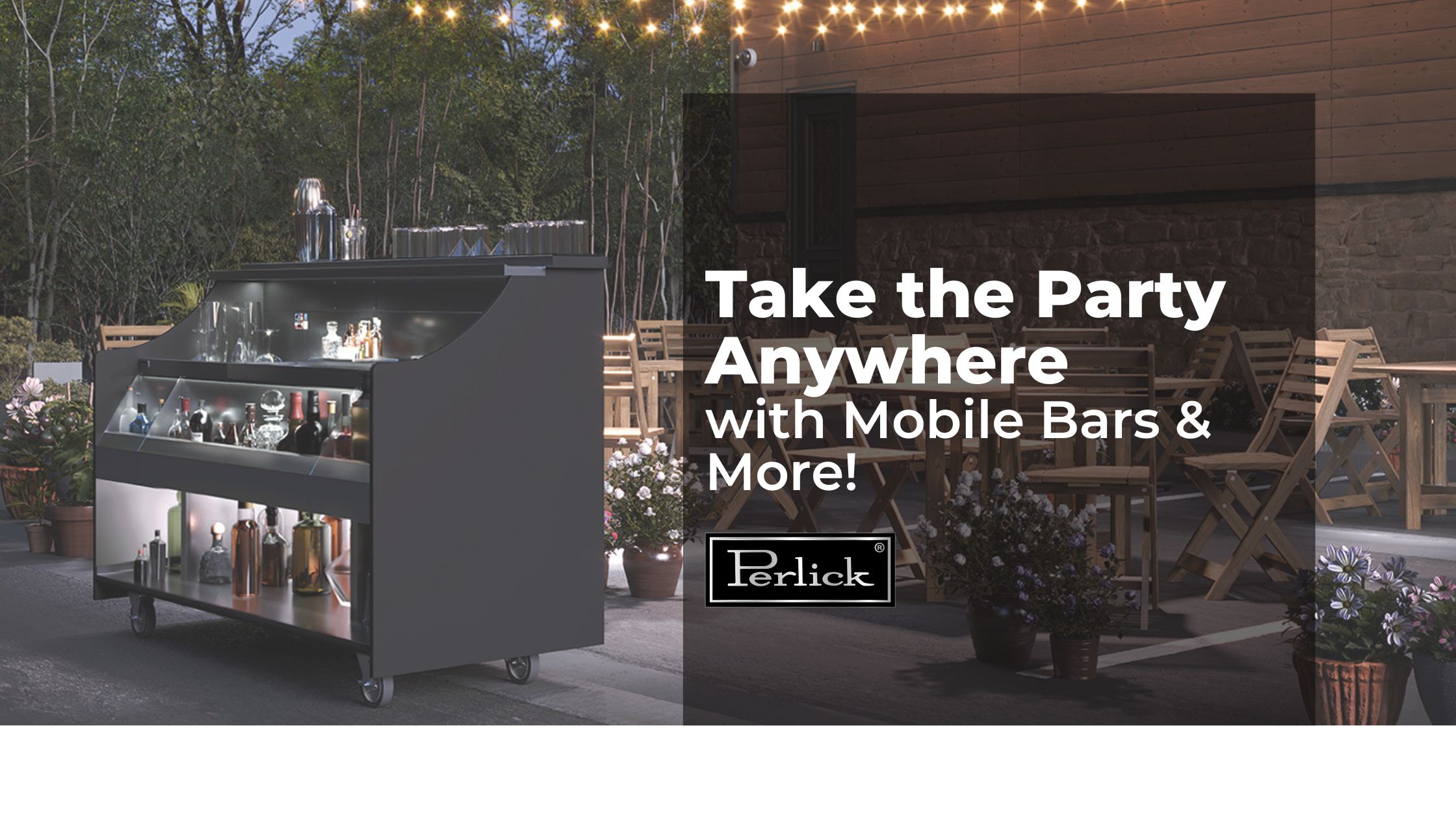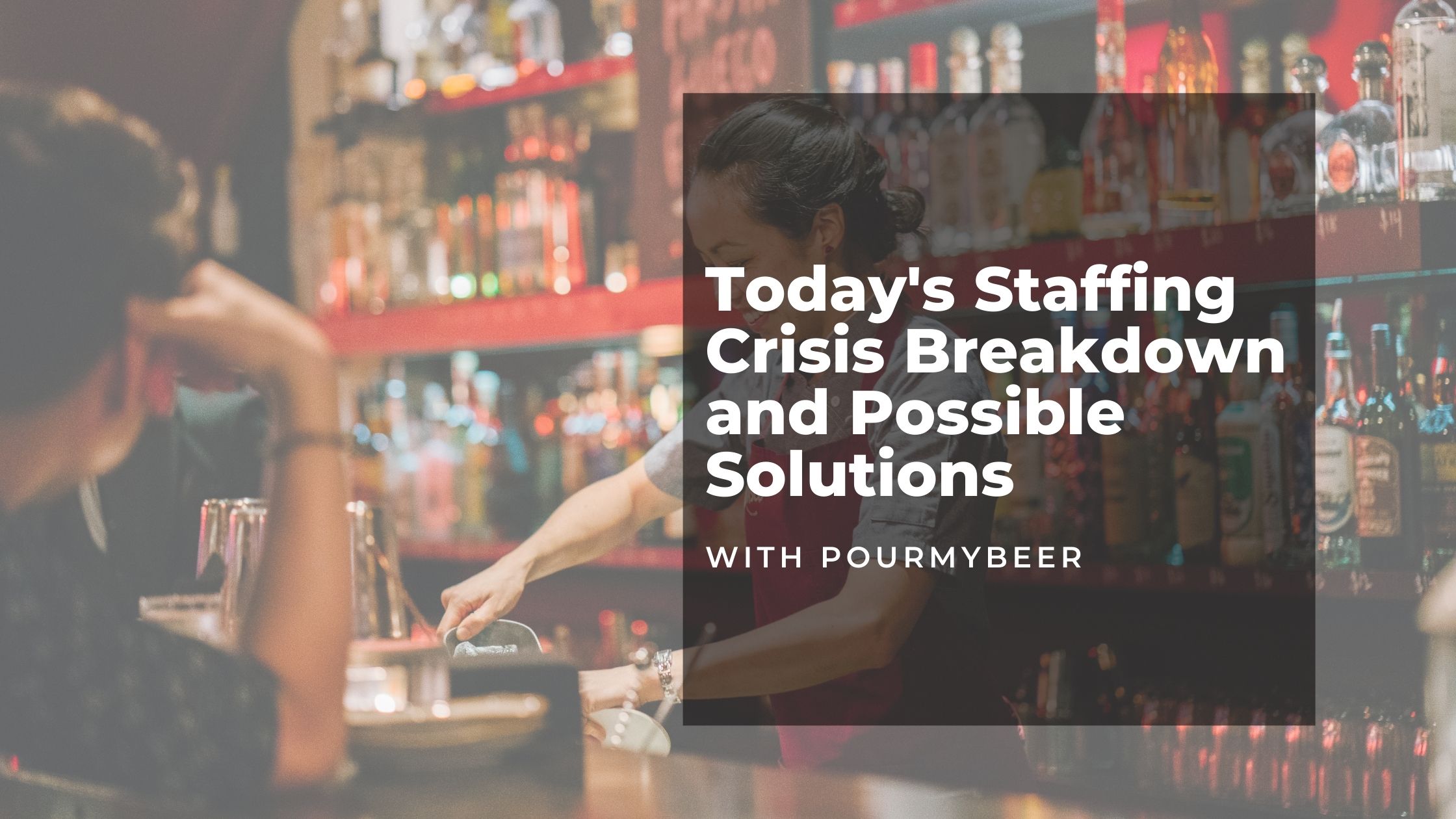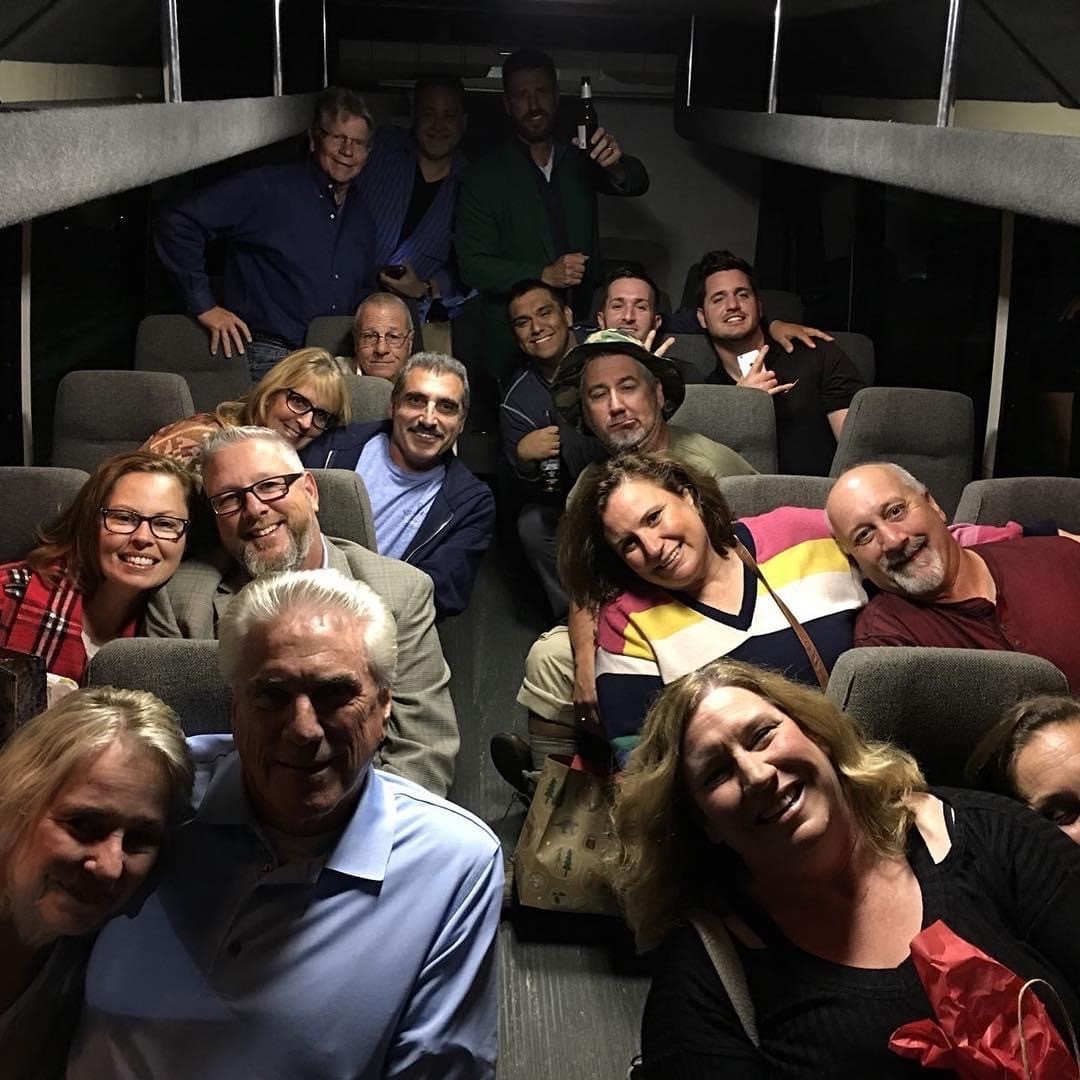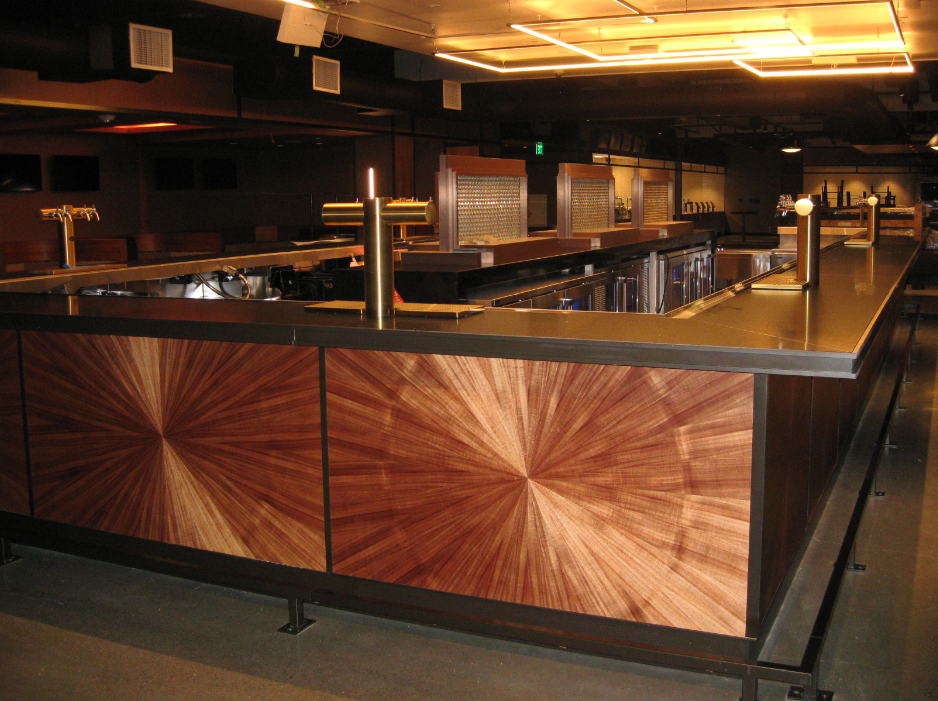Two simple words are like music to a baseball fan’s ears. No, not “Play ball!”
“Beer here!”
Baseball and drinking beer. These two American pastimes have gone hand-in-hand over the last 100 years. But the relationship between baseball and beer has had its ups and downs. In the late 1800s, the National League kicked teams out of the league for selling beer. Today, you can’t go one pitch without seeing beer advertisements.
The game, and the beer, has certainly changed over time. But from the designated hitter to the designated driver, the history of baseball and beer is longer than a stadium beer line during the 7th inning stretch.
As Perlick celebrates 100 years of bar and beverage innovation, let’s take a look at how beer and baseball have impacted one another over the last century.
[See how baseball stadiums are using Perlick Beer Systems]
1920
Beer was one of the earliest, and most popular concession items. Until 1920. The 18th Amendment was enacted prohibiting the production and sale of alcohol. Prohibition left ballparks all over the country dry and empty of beer, which, next to hot dogs, was the lifeblood of concession stands. Baseball stadiums would eventually gain a reputation as a speakeasy of sorts, with law enforcement keeping a stern eye on fans. A “walking speak-easy” or a man with a harness full of highballs, even sold drinks near the Polo Grounds on game day.
1933
Right around baseball’s Opening Day, on April 7, 1933, Prohibition was repealed and everyone from baseball fans to baseball players rejoiced. Coincidentally, Major League Baseball’s first All-Star Game was this year, a celebration that would certainly be accompanied by beer. The decade-plus apart only made beer and baseball’s relationship stronger. The 1930s were also an important time for Perlick, as the first Direct Draw Beer System was rolled out.
1940s
Beer sponsorships of local baseball broadcasts ramped up. Falstaff Brewing Company sponsored former MLB pitcher Dizzy Dean’s St. Louis Browns broadcast. Falstaff would follow suit decades later with Harry Caray’s 1970s broadcasts. Home run calls would be sponsored by a local beer company. Mel Allen would call a New York Yankee home run a “Ballantine Blast” after Ballantine Beer. The movement from radio to television would solidify baseball’s relationship with beer for years to come.
1950s & 1960s
Baseball television broadcasts were heavy on beer advertisements, both during the game and during commercial breaks. Many local brewing companies in these major cities set aside a great deal 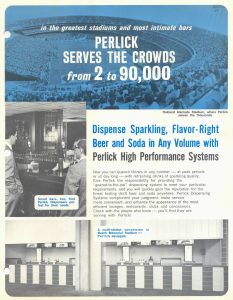 of marketing dollars towards baseball advertising, a trend that would continue for decades. A few notable sponsor-team relationships included the Boston Red Sox and Narragansett Beer, the Minnesota Twins and Hamm’s Beer, and the Milwaukee Brewers and Miller Brewing.
of marketing dollars towards baseball advertising, a trend that would continue for decades. A few notable sponsor-team relationships included the Boston Red Sox and Narragansett Beer, the Minnesota Twins and Hamm’s Beer, and the Milwaukee Brewers and Miller Brewing.
The 1960s were a turning point in beer systems for large crowds. In 1962, Perlick unveiled the Century Beer System, the first glycol beer system that could transport beer up to 100 feet. It solved draught beer issues at sports stadiums across the country.
1974
One of beer’s ugliest incidents with baseball occurred on June 4, 1974 at Cleveland Stadium in a game between the Cleveland Indians and Texas Rangers, known as “Ten Cent Beer Night.” The promotion allowed fans to purchase up to six beers at a time, for ten cents apiece. Tensions were high and 25,000 rowdy fans saw streakers take the field, and threw objects at Rangers players. The Indians would rally to tie the game 5-5 in the bottom of the ninth.
It was then that a young man ran onto the field to try and steal a Ranger’s hat. Texas players thought he was attacked, and rushed the field with bats, followed by a stream of fans armed with knives, chains, and bottles. Even the Indians, trying to protect their baseball brethren, attacked their own fans. The riot resulted in 9 arrests and a forfeit.
The next 10-cent beer night was July 18, and went off without a hitch.
1982
The memorable 1982 World Series, known also as the “Suds Series,” saw the St. Louis Cardinals beat the Milwaukee Brewers in seven games. St. Louis’ affiliation with Anheuser-Busch, and Milwaukee’s relationship with Miller Brewing, made this World Series a beer-centric affair.
2017
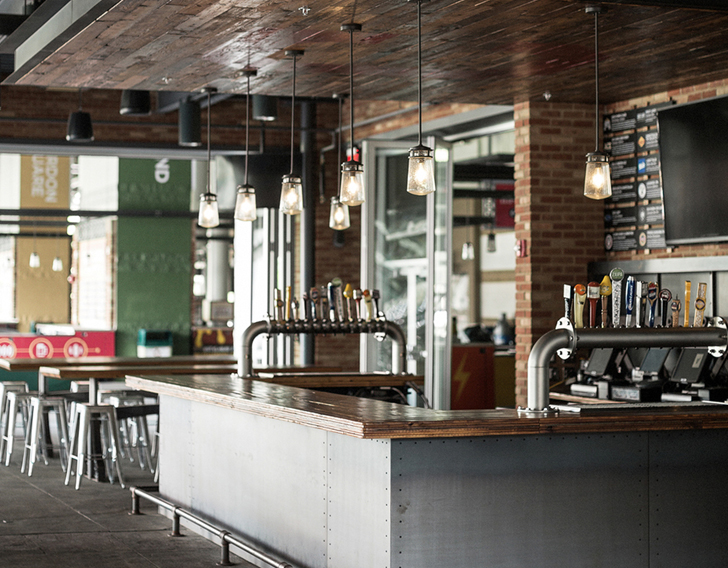 Perlick Installation at Progressive Field in Cleveland, OH
Perlick Installation at Progressive Field in Cleveland, OHBeer is as much a part of baseball today as it’s ever been. From the stadium names, like Coors Field and Miller Park, to the influx of craft beers in stadium concession stands, beer is an integral part of the baseball experience. Even baseball players are getting in on the action. And there’s no signs of the trend changing. Beer and sports remain a dynamic duo, with 81% of regular drinkers consume beer during baseball games. Beer sales at baseball stadiums continue to rise, and with more choices than ever before, ballparks from Single-A to the majors are taking advantage. But capitalizing on baseball beer sales starts with the right beer systems.


